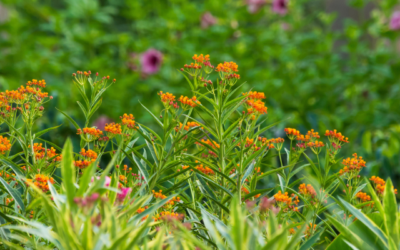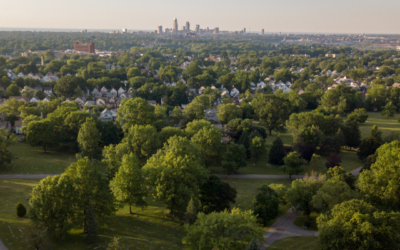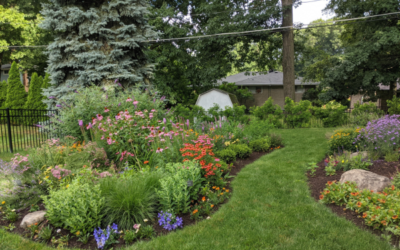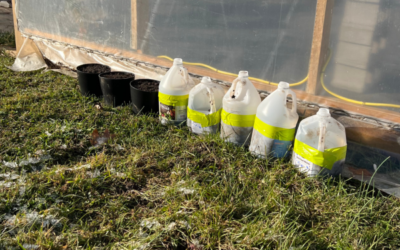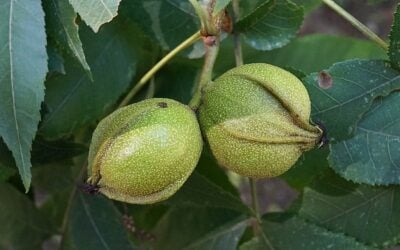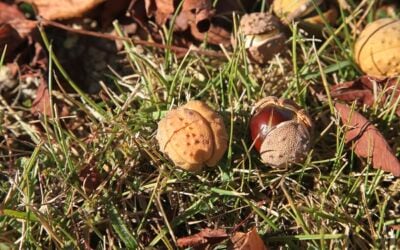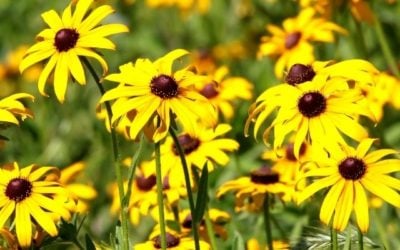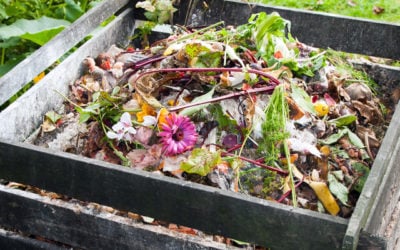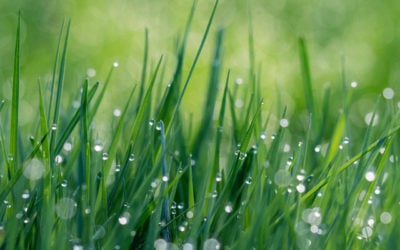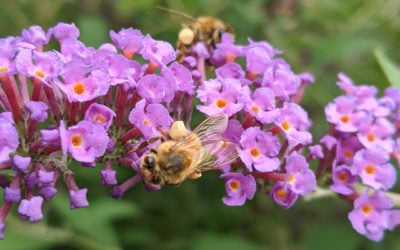Wildlife-Friendly Fall Yard Cleanup

By September, the leaves are already starting to fall and it’s time to start preparing your yard and garden for winter. We have some tips to ensure that your fall cleanup is friendly to wildlife and the local watershed.
Remove or cut back any diseased plants.
Be sure to clean up around any perennials or trees that show signs of disease or fungal infection. These diseases will re-infect plants in the spring, so get rid of anything that shows signs of fungus. Throw it away and do not compost.
Don’t cut back other dead flowers and ornamental grasses.
The seed heads of these plants serve as important sources of nutrition for many species of birds during the colder months. Dried flowers and grasses can be a decorative addition to your landscape also. Consider leaving them intact until spring for the birds to enjoy in the winter.
Don’t throw out those branches – create a brush pile!
Areas of fallen debris and dead logs can serve as hiding and breeding places for birds, amphibians, and small mammals. If you have the room, create a brush pile in an inconspicuous part of your property where you can deposit twigs, branches and fallen logs rather than bundling them for pickup with your yard waste. (Check with your local regulations to ensure this is allowed.)
Wait until spring to rake up (some) leaves.
Many butterflies and other beneficial insects will lay eggs and hatch larvae underneath ground litter such as leaves. Raking leaf litter can disturb insect breeding habitat. The dead leaf cover also provides a layer of protection from the cold for animals wintering underground.
Now, avoid thick layers of leaves around bushes or on your lawn because a heavy mat of leaves will cause grass to die and the roots of perennials to rot. But if you have wooded areas of your yard that can be left unraked until spring, leave some light leaf cover around edge areas, and around the brush pile you have created. Your leaf litter and brush pile will benefit a multitude of creatures.
Compost or mulch your yard waste.
Many types of fall yard waste, like sticks and leaves, make a great (and free!) mulch. If you have a chipper shredder, you can take much of your yard waste and turn it into mulch that you can use directly around bushes, flower beds and garden beds.
These are also great additions for your compost pile. If you have a large quantity of one particular type of yard waste (like lots of leaves) and it’s too much to use all at once, you can save some in a large trash can or other waterproof container and use it for layering into your compost throughout the winter whenever you need some “browns.” It’s best to gather these types of materials when they are relatively dry, so they don’t rot in whatever container you save them. If you have never composted your food scraps and yard waste, visit Composting 101 for tips on how to get started.
Don’t leave soil bare.
Once you have pulled up annuals and veggies and there are no longer roots to hold the soil in place, it’s important to cover the soil to prevent erosion and loss of nutrients. You can cover with a variety of mulches like grass clippings, straw, paper or bark mulch.
Or you could sow a late cover crop like clover to add nitrogen back into the soil. In the spring, you can dig the cover crop into the soil a few weeks before planting. The cover crop will act as a compost and add more nutrients back into the soil.
Try adding a natural bark mulch around perennials to help protect their roots to survive the winter. Particularly any perennials that you planted this year may need some extra protection to survive their first year.
More Articles for a Healthy Yard and Home
How To Fight Stream Pollution Through Effective Stormwater Management
In this guide, we’ll explore and address how pollutant loading in streams is crucial for the well-being of both watersheds and communities.
Roots of Sustainability: Understanding the Importance of Trees in Urban Living
A healthy urban tree canopy has a profound and positive impact on community quality of life in various ways. Recognizing the value of urban trees and investing in their preservation can contribute to sustainable, resilient, and vibrant urban living.
Shrink Your Lawn: A Guide to Growing More Native Plants
In this guide, we’ll explore the importance of reducing your lawn’s size and explain the many benefits it brings, both for your wallet and the environment.
Cold-Weather Cultivation: 8 Steps to Winter Sowing and Seed Stratification
It is important to determine when native seedlings are ready for harvest. Not sure how to? Check out our guide to harvesting native seedlings.
How to Know When Native Seedlings are Ready to be Harvested
It is important to determine when native seedlings are ready for harvest. Not sure how to? Check out our guide to harvesting native seedlings.
Harvesting Guide for Native Seedlings and Plants
Stearns Native Nursery is always in need of native trees and seedlings. To get your native plants to the Stearns Nursery, follow this harvesting guide.
How to Add Native Plants to Your Garden
Many of us have chosen to cultivate species and landscapes that are not naturally-occurring in our region. It’s wasteful, expensive and detrimental to wildlife who encounter reduced availability of the native species upon which they feed.
Composting 101
Before any landscape program begins, assess the current conditions of your home landscape. This assessment will help you to identify and prioritize future projects and allow you to appreciate all the positive changes you’ve made.
Turf Grass Care
Before any landscape program begins, assess the current conditions of your home landscape. This assessment will help you to identify and prioritize future projects and allow you to appreciate all the positive changes you’ve made.
What is a Pollinator Garden?
Before any landscape program begins, assess the current conditions of your home landscape. This assessment will help you to identify and prioritize future projects and allow you to appreciate all the positive changes you’ve made.

